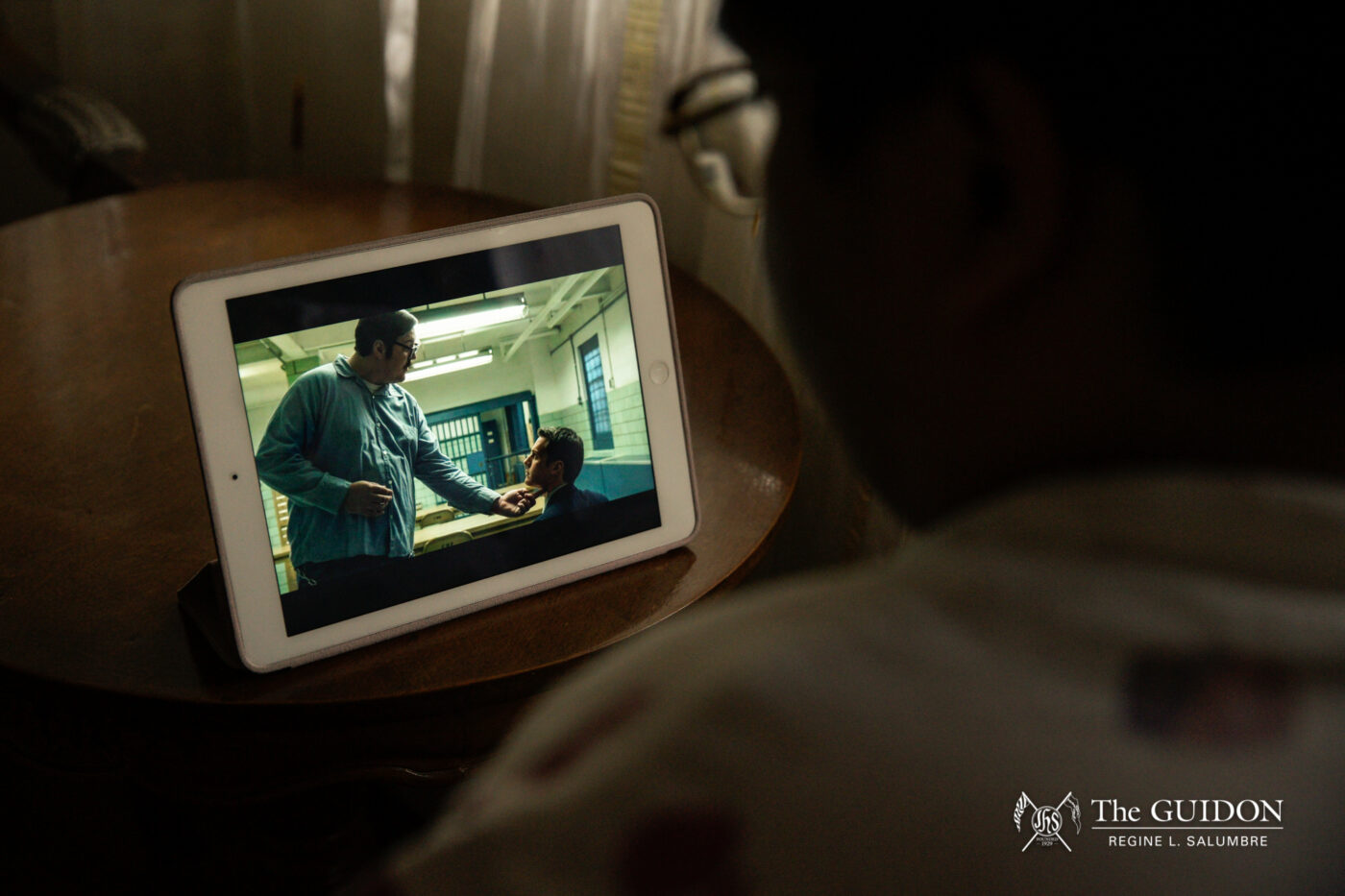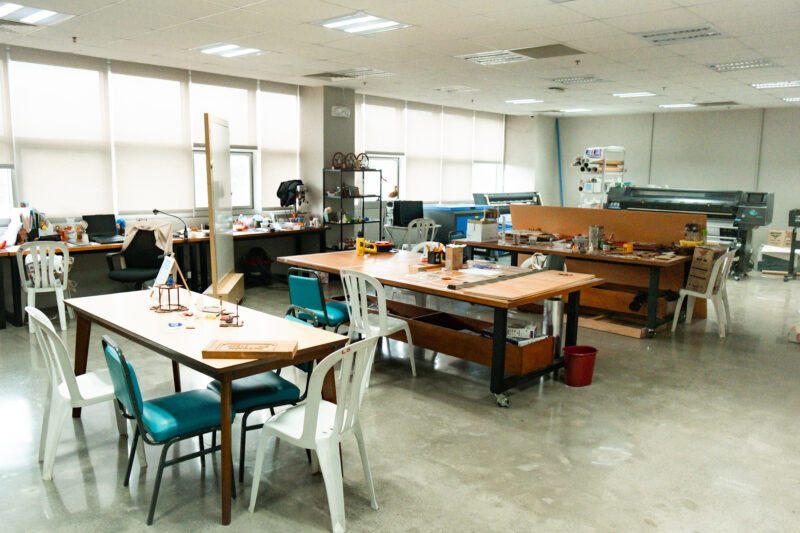After filming, Smaller and Smaller Circles screenwriter Ria Limjap takes a breather, scrolling through her Twitter. She comes across a picture of a boy, head covered in tape and body stabbed with wounds.
“It was such a weird, eerie mirroring of this film we had made, a story written in the nineties” she says, describing the fact that this was not a prosthetic on set on a movie but a real victim. “There must be some truth to when they say crime fiction is a good barometer to see what’s happening on the streets.”
With clever plot twists, gore, and thrills of taking down the enemy, the crime and mystery genre has been gaining popularity and appeal all over the world. But to a country constantly faced with news of violence, these shows may not seem so appealing. In the Philippines, the genre has not gained as big of an audience compared to romance and comedy.
Murder, mystery, and man
The global crime genre trend stems from the people’s interest in violence and discord. Quite similar to the feeling of witnessing a tragedy, the concept behind watching crime shows or films is that people want the thrill of a crime scene, but from the safety of their comfort zones—much like a voyeur. A common archetype in crime fiction is the serial killer—an attractive trope as it presents the complexity of the human being.
Mysteries are often a source of great pleasure. Likewise, the mystery behind the complex and enigmatic character of a serial killer tickles the minds of many viewers.
Crime and mystery can be made to give a variety of genre combinations. Some have more action than others, such as On the Job (2013), a crime thriller film; while others are rooted to real-life events, like Birdshot (2016), a mystery thriller film.
Similarly, Filipino telenovelas also have a variety of genre combinations. Romance and drama genres are prevalent across various media, using commonly used plot lines like switched at birth in Mara Clara (1992-1997, 2010-2011), amnesia in My Amnesia Girl (2010), and the ever-popular love triangle.
The crime tropes in telenovelas are only used to move the plot forward. To make it either more exciting or appealing to the audiences, filmmakers add a heartthrob as the protagonist or a kilig love story. The question then: Why is the crime genre not as appealing to Filipino audiences, evident in the few productions with these kinds of plotlines?
Immerse and imitate
One way to answer this question is through the human psyche. In the Bobo doll experiment conducted in 1961, psychologists noted a tendency for children to imitate aggressive action. Some psychologists even theorized that violent media can lead to violent actions, although this is still up for debate.
It raises a concern for some people that the more exposed society is to crime or portrayals of violence in media, the more likely it is to imitate or condone it. One may wonder if enjoying crime and mystery media can spur urges to commit real life crimes, if exposed to it enough. While Limjap, also a psychology graduate, acknowledges media’s effects, she says that “[t]hat’s not the only thing that makes a person violent.”
Limjap gives the example of the show Mindhunters (2017), where the serial killers, modeled after real criminals, share characteristics in the the way they were raised. These characters are often missing a parental figure or part of an abusive home. In Smaller and Smaller Circles (2017), the killer experienced neither, but rather, had a deep childhood trauma that resulted to crime. Turning book to film, Limjap did extra psychological research to make sure the cause of his actions was plausible.
“It takes a lot to create a monster,” she says.
The same can also be said about actors or creators portraying criminal deeds, as art does not always reflect one’s personal beliefs or real life behavior. Lin-Manuel Miranda, creator and star of the Broadway musical, Hamilton, describes his work as a way to experience everything you would not do in your normal life. “Art is the place to safely explore all those other sides of you,” he says.
Now what about the moral and ethical effects of crime media on the human psyche? There is the phenomenon of decentering oneself by immersion through texts or media. Philosophy professor Leovino Garcia, PhD, states in the article Interpreting Life: Paul Ricoeur’s Hermeneutics of the Text, that “the narrative of our life must use the capacity of fictional and historical texts to understand its hidden possibilities.” One does not have to live through something to gain insight from it, like how dystopian fiction is an alternative reality should governments increase control.
Thus, crime films with heavier plots like mystery solving, can be a mind exercise, leaving viewers with afterthoughts. One may fear that what is portrayed in media is acceptable in reality. But the key words are “hidden possibilities” –what happens on screen is not real but alternative results to choices one can make.
Hitting close to home
While Limjap acknowledges fear of violence imitation through exposure to crime and mystery, she says that the cause of the genre’s unpopularity in the country lies in the seeking escapism in media. “When you want to be entertained, the goal to is to forget the difficulty your own life,” she says.
Crime and violence is something the everyday Filipino encounters whether on or off screen. For instance, deaths from extrajudicial killings now rise to the ten-thousands. Corruption is still evident based on the Corruption Perception Index 2016.. Thus, media in the Philippines is often used to escape the travails of real life, especially for those in poverty.
Real life also, unfortunately includes trauma, psychiatric disorders, and such; and how far these films are willing to delve into these can depend on culture. For example, the Japanese have disturbing symbolism or psychotic characters, yet lean towards the fantastical. In America, they have drama and thriller films of real life criminals, such as Narcos (2015) or My Friend Dahmer (2017).
Philippine media culture, however, is different . “The audience here doesn’t want to be shocked. They want to laugh, cry, and fall in love,” Limjap says, citing the dominance of comedy, drama, and romance in the latest film festivals. It can even be said that crime is integrated into comedy and romance plot lines more than romance is integrated into those of crime fiction.
“People don’t want to look at reality here because [it’s] so in your face,” says Limjap. British author Paul French, notes that “many people in Manila have to deal with crime and criminals on a daily basis in their communities,” and that “[Filipinos] don’t want it in fictional form too.”
French uses the classic crime satire Noli Me Tangere to show how crime fiction can resemble the current political and criminal state of society. Since the basis of most crime genre media is reality, it’s a reflection of how societies behave and respond to each other.
The crime genre is in no means small, and can include action, thriller, and even romance. But due to its reflection of the current state of society, Filipino audiences don’t always look for crime and mystery, opting for the happier endings and ideal romances.







